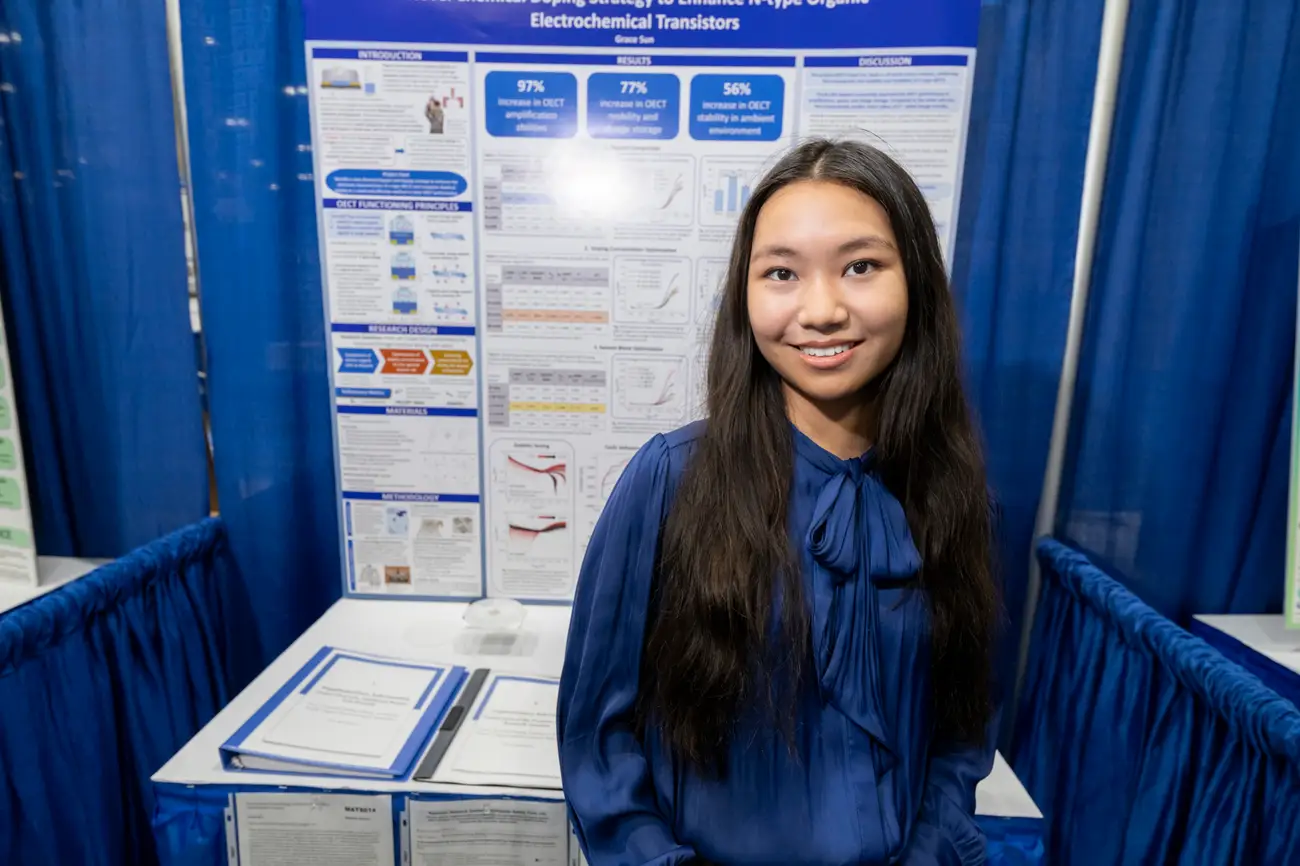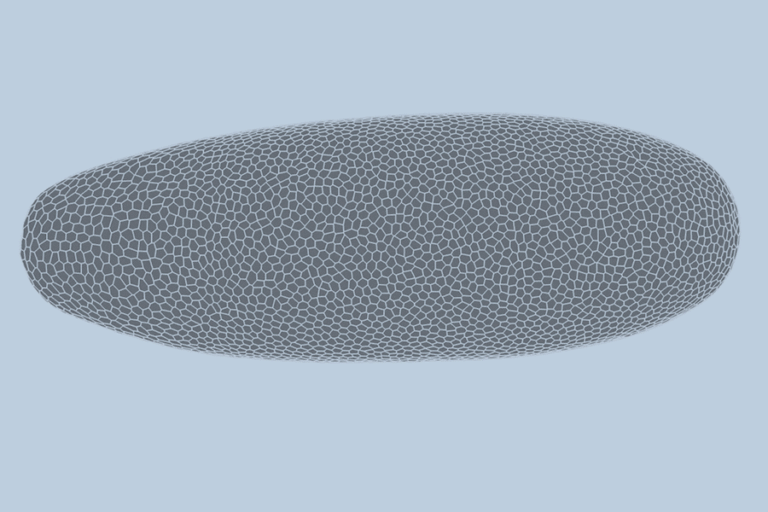Teenager awarded for discovery that could revolutionize biomedical implants

At just 16 years old, Grace Sun has already made a remarkable contribution to the field of biomedical engineering. The high school student from Lexington, Kentucky, has developed a new technique that could revolutionize organic electronic devices, paving the way for significantly more compatible and less invasive medical implants.
Her groundbreaking research on organic electrochemical transistors (OECTs) recently earned her the prestigious $75,000 George D. Yancopoulos Innovator Award at the Regeneron International Science and Engineering Fair (ISEF).
Sun’s project focused on addressing the performance issues currently faced by OECTs, which are soft, flexible devices made of organic materials that show immense promise for applications in biomedical technology. Despite their potential advantages over traditional silicon-based electronics, OECTs have struggled with instability and degradation when used in biological environments like the human body.
Through her research, Sun discovered that “doping” OECTs with a specific organic salt, tetrabutylammonium chloride, significantly improved their performance. Her findings demonstrated a 97% increase in amplification abilities, a 77% improvement in switching speed, and enhanced sensitivity and signal-to-noise ratio. These advancements could pave the way for the development of highly accurate and responsive biomedical devices capable of detecting early signs of disease through monitoring biochemical markers in the body.
The implications of Sun’s work are far-reaching. As she explained, “They’re so much more accurate, their speed is higher, their performance is higher because they consider signals in the body that previous electronics haven’t considered. They’re also safe because they’re made of organic materials.” The softness and flexibility of OECTs make them ideal candidates for applications like heart and brain implants, offering a less invasive and more compatible alternative to traditional medical devices.
Sun’s achievement at the ISEF competition, which drew nearly 2,000 students from around the world, is a testament to the quality and significance of her research. According to Ian Jandrell, a judging co-chair for the materials science category, Sun’s project stood out as “the number one project, without a shadow of a doubt.” The judges were impressed by “the sophistication and the diligence” of her work, as well as her ability to eloquently explain and defend her research methodology and findings.
While Sun’s success at such a young age is remarkable, it is the result of months of dedicated effort and countless hours spent in the lab at the University of Kentucky. For several weeks, she left school early to spend five additional hours working on her project, often requiring extensions on assignments from her understanding teachers.
Sun’s passion for chemical engineering and her desire to make a tangible impact on medicine are evident in her aspirations for the future. “Hopefully I can make some sort of commercializable breakthrough, like what I’m trying to do now with these devices,” she said. “If possible, I do want to start a business so that I can get them into the real world in industries to impact more people directly.”
Beyond the potential for new early-diagnosis tools and less invasive medical implants, Sun envisions a wide range of applications for OECTs, such as embedding them in clothing to monitor sweat or using them for accurate blood-alcohol level testing before driving.
- See also: New method of producing human cartilage
While Sun’s research is still in its early stages and has not yet undergone the rigorous peer-review process required for publication in scientific journals, her work at ISEF represents a crucial step in the scientific process: hands-on experience conducting and defending research. As Christopher Gould, the judging chair at ISEF, noted, the event encourages students to learn by doing, providing a platform for them to explore, experiment, and contribute to the advancement of scientific knowledge.
In Grace Sun, the scientific community has witnessed the emergence of a promising young talent with the potential to shape the future of biomedical engineering. Her innovative approach to improving OECTs and her dedication to finding practical applications that can directly benefit people’s lives are truly inspiring. As she continues her academic journey, there is little doubt that Sun’s passion, intellect, and determination will lead to further breakthroughs in the years to come.






